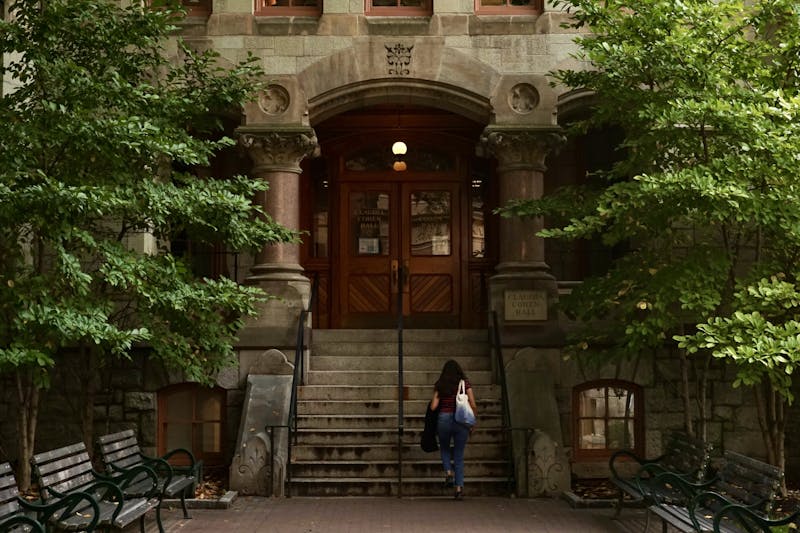
With the Bioengineering Department cited as a top priority of the Engineering School, the Pender Laboratory will be demolished next academic year to make room for a new bioengineering research facility.
The project will take two years to complete once the design is finalized by next fall, officials said.
The site -- flanked by the Towne and Moore buildings on the 3300 block between Walnut and Locust streets -- will become the new home of Skirkanich Hall, a $38 million, 55,500-square-foot structure complete with classrooms, administrative space and, most significantly, wet laboratories, where chemical and biological work requiring ventilation can be performed.
"We want every possible square inch to be laboratory space," Engineering School Dean Eduardo Glandt said.
Plans for Skirkanich Hall began three years ago as part of the SEAS ten-year strategic plan, in which bolstering the Bioengineering Department took high precedence.
About two thirds of the renovation budget has been provided by the University in the forms of foundation grants and individual gifts, and the rest has been raised by SEAS, according to Omar Blaik, Penn's top facilities official.
"It's very well-funded from that perspective," Blaik added.
The feasibility study began nearly six months ago once the necessary money had been collected, and now Penn has hired Tod Williams Billie Tsien & Associates -- a small, award-winning architecture firm based in New York -- to head the facility's design.
"This [project] was on a much faster track than normal," Blaik said.
Nevertheless, an up-to-date bioengineering facility has been a long-standing goal of many Penn engineers.
Bioengineering facilities have been located for 20 years in Hayden Hall, which was originally intended to be a temporary accommodation.
"It was not built to do wet lab research," Glandt said, noting that SEAS plans to house its libraries in Hayden. "It couldn't be more inappropriate."
While awaiting its brand-new laboratory space, SEAS is preparing for the intrusion of two years of construction.
"We will be disrupted horrendously," Glandt said.
Despite the building's name, the Pender Laboratory contains just five classrooms and a few offices, which will be moved into various locations on campus during construction and then permanently into the Moore Building, according to Glandt.
"We'll be doing a sort of musical chairs," Glandt said, adding that extra space will be made available once Levine Hall -- SEAS's new 40,000-square-foot computer science building -- opens this spring.
The Pender Laboratory was built in 1960, when the Moore School of Electrical Engineering was still independent of the Engineering School. When electrical engineering joined the other Engineering departments about 20 years ago, the need to create multidisciplinary research space became increasingly apparent.
And meanwhile, SEAS's wet lab work has been constrained by the lack of proper amenities on campus.
"Ventilation is a safety issue," Glandt said.
Bioengineering Professor Leif Finkel noted that wet laboratories are scattered around campus. One of the wet laboratories that bioengineering undergraduate students use is located in the basement of Towne.
"It's not adequate," Finkel said, explaining that because of the growing number of bioengineering students, scheduling lab courses has become increasingly difficult.
"Physically, there's not enough space," Finkel said.
The Pender Laboratory is smaller than 15,000 square feet, but Skirkanich Hall will be nearly four times that size, extending closer to Walnut Street and Locust Walk and exceeding the old building's height by one extra story.
Portions of Towne and Moore will also be renovated to create connecting corridors between the buildings, but Glandt said that the work will directly impact only some faculty and staff office space and not students.
The Daily Pennsylvanian is an independent, student-run newspaper. Please consider making a donation to support the coverage that shapes the University. Your generosity ensures a future of strong journalism at Penn.
DonatePlease note All comments are eligible for publication in The Daily Pennsylvanian.







